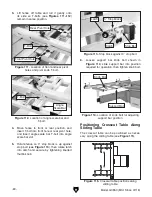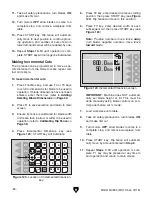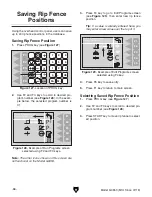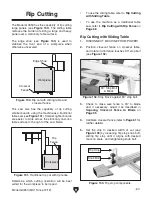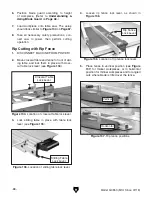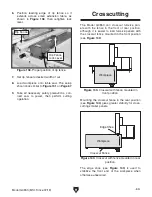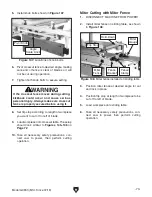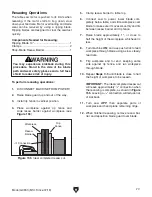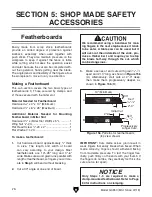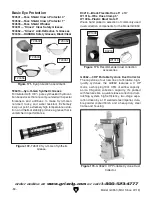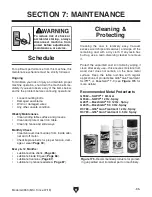
Model G0853 (Mfd. Since 07/18)
-71-
5. Load workpiece onto table saw in rear mount-
ing position, shown in
Figure 140 on Page
70. If necessary, use edge shoe to secure
workpiece to sliding table.
6. Take all necessary safety precautions, con-
nect saw to power, then perform cutting
operation.
Crosscutting Smaller Panels
1. DISCONNECT MACHINE FROM POWER!
2. Install crosscut fence in rear mounting loca-
tion shown in
Figure 140 and secure in place.
3. Perform Steps 3–4 in Crosscutting Full-
Size Panels.
4. Set either flip stop to the desired width of cut.
Note: Extend the crosscut fence slide if the
workpiece is more than 75
7
⁄
8
".
Crosscutting Using Rip Fence as
Cut-Off Gauge
1. DISCONNECT MACHINE FROM POWER!
2. Install crosscut fence in rear position of
crosscut table, as illustrated in
Figure 141 on
Page 70, and secure in place.
3. Perform Steps 3–4 in Crosscutting Full-
Size Panels.
4. Set rip fence to desired width of cut.
5. Slide leading end of rip fence behind front
edge of blade (see
Figure 143 for an
example).
IMPORTANT:
This step is critical to reducing
the risk of blade binding and kickback.
6. Load workpiece onto table saw and against
rip fence. The setup should look similar to
Figure 141 on Page 70.
7. Take all necessary safety precautions, con-
nect saw to power, then perform cutting
operation.
Figure 143. Example photo of correct rip fence
position when using it as a cut-off gauge
(blade guard removed for clarity).
Rip Fence
Front Edge
of Blade
Leading Edge
of Rip Fence




